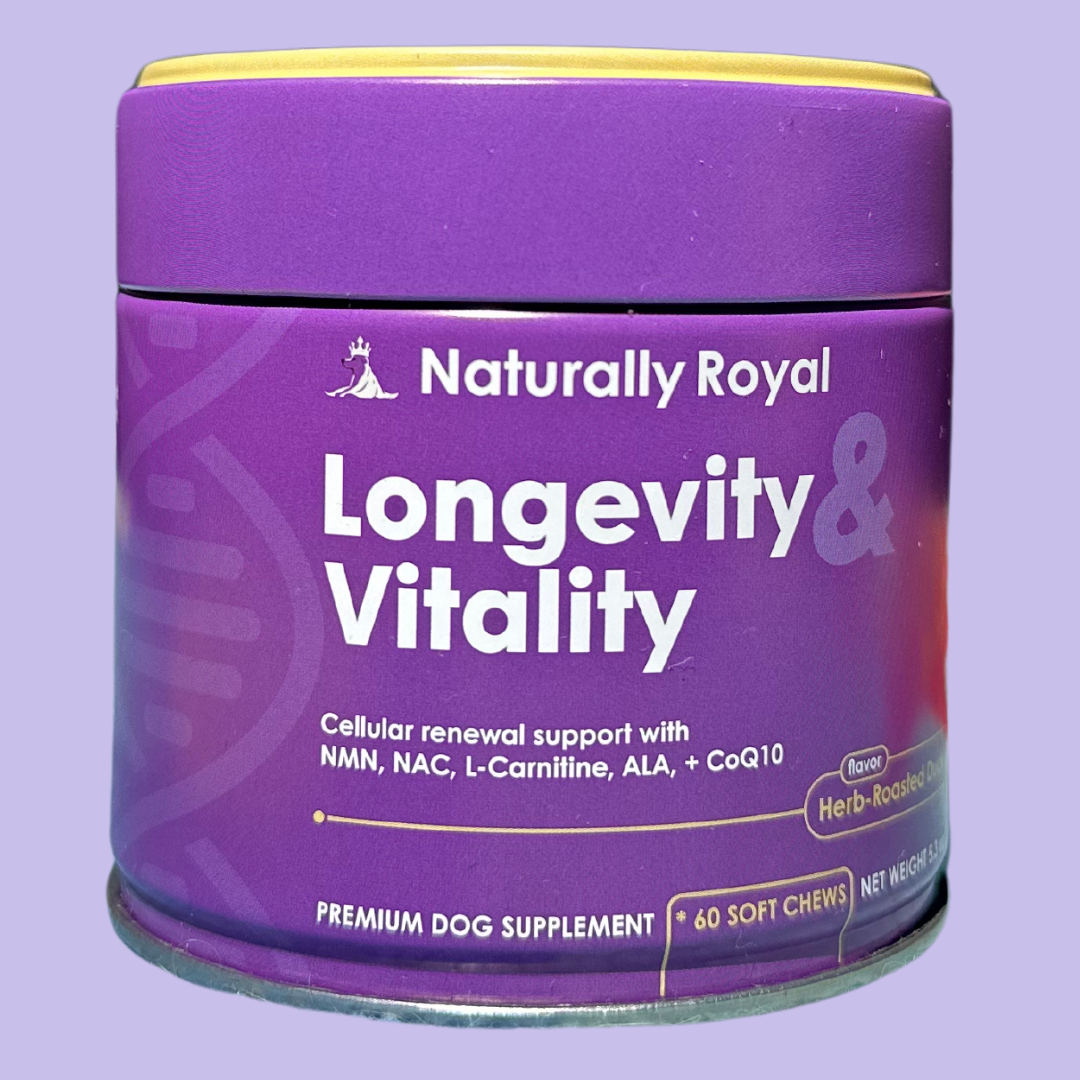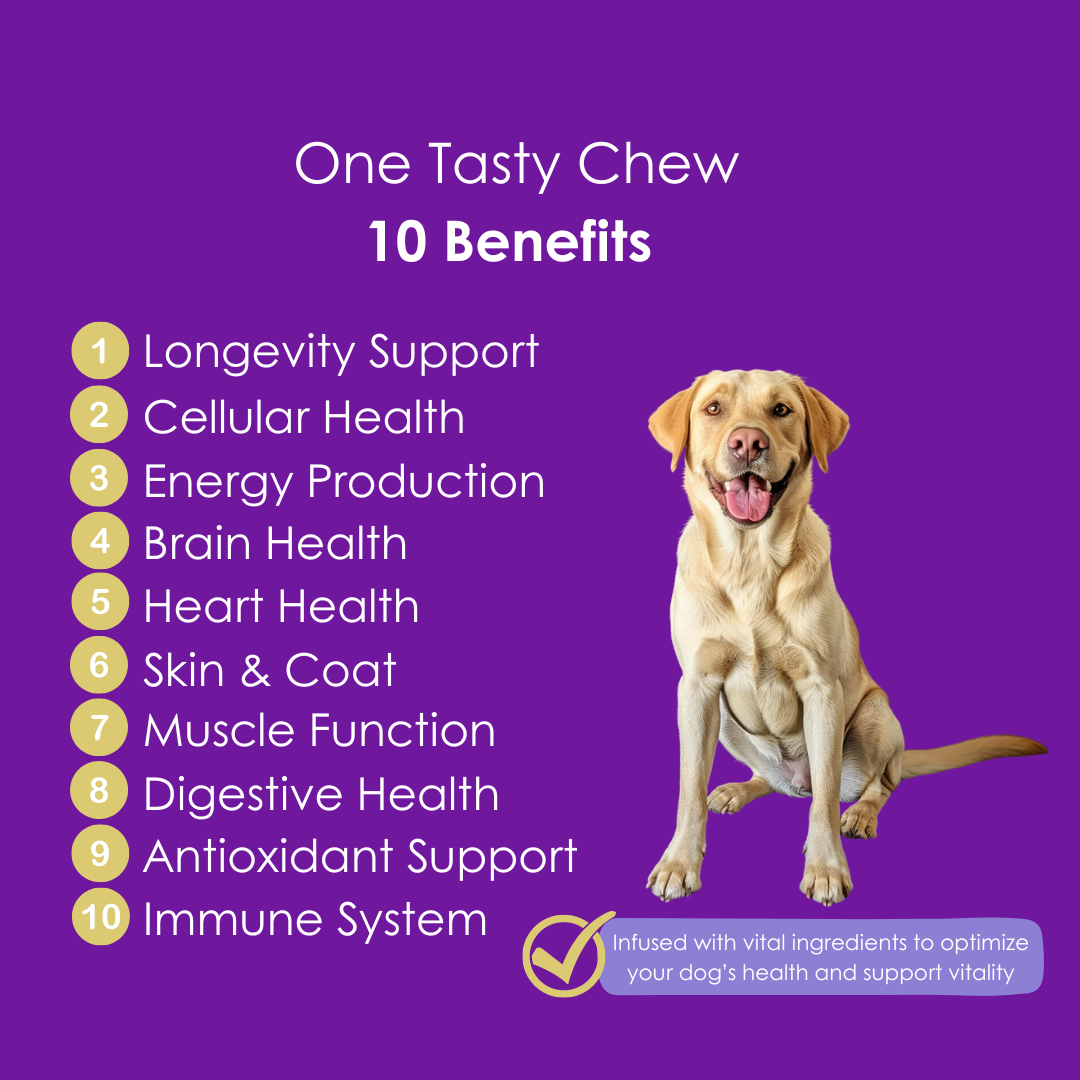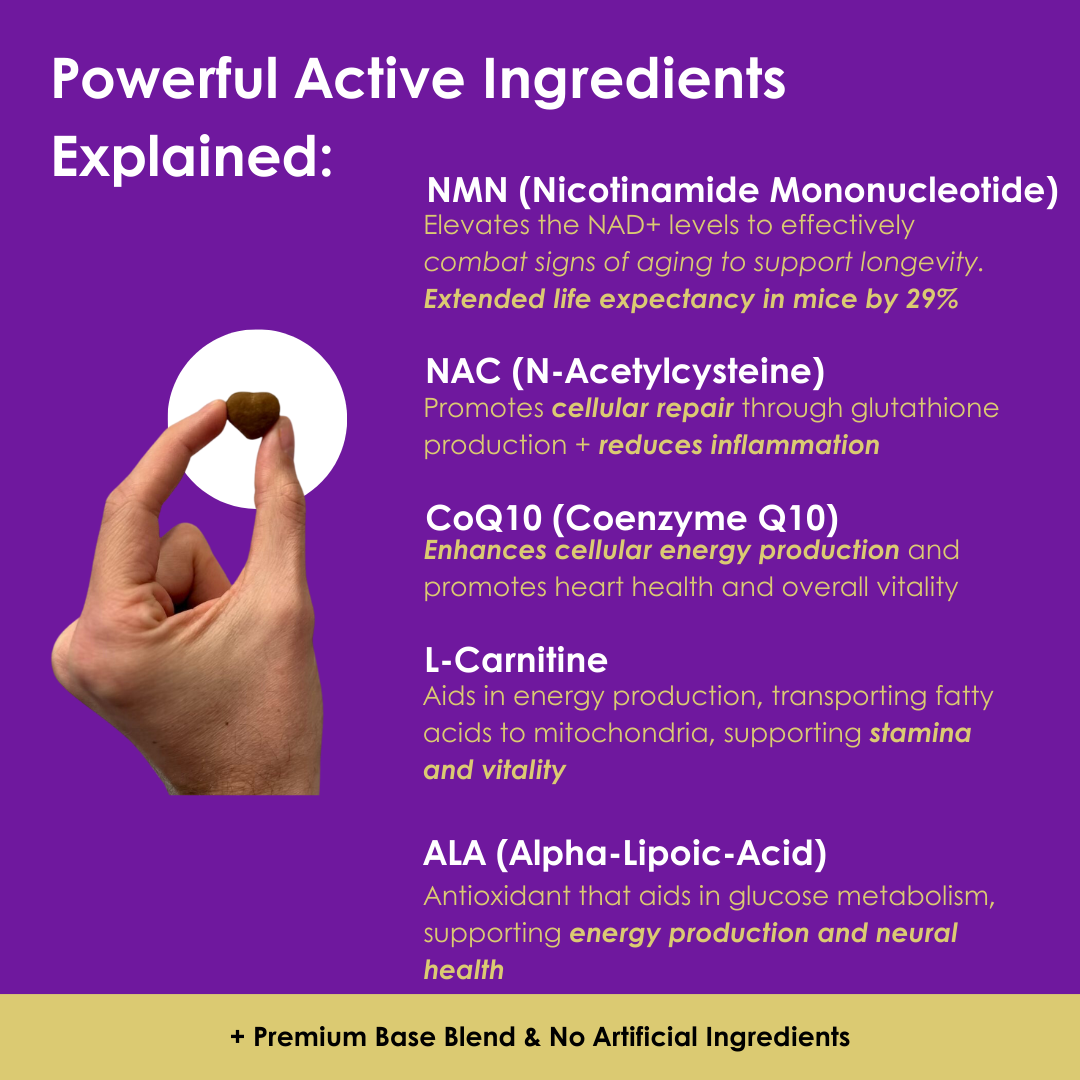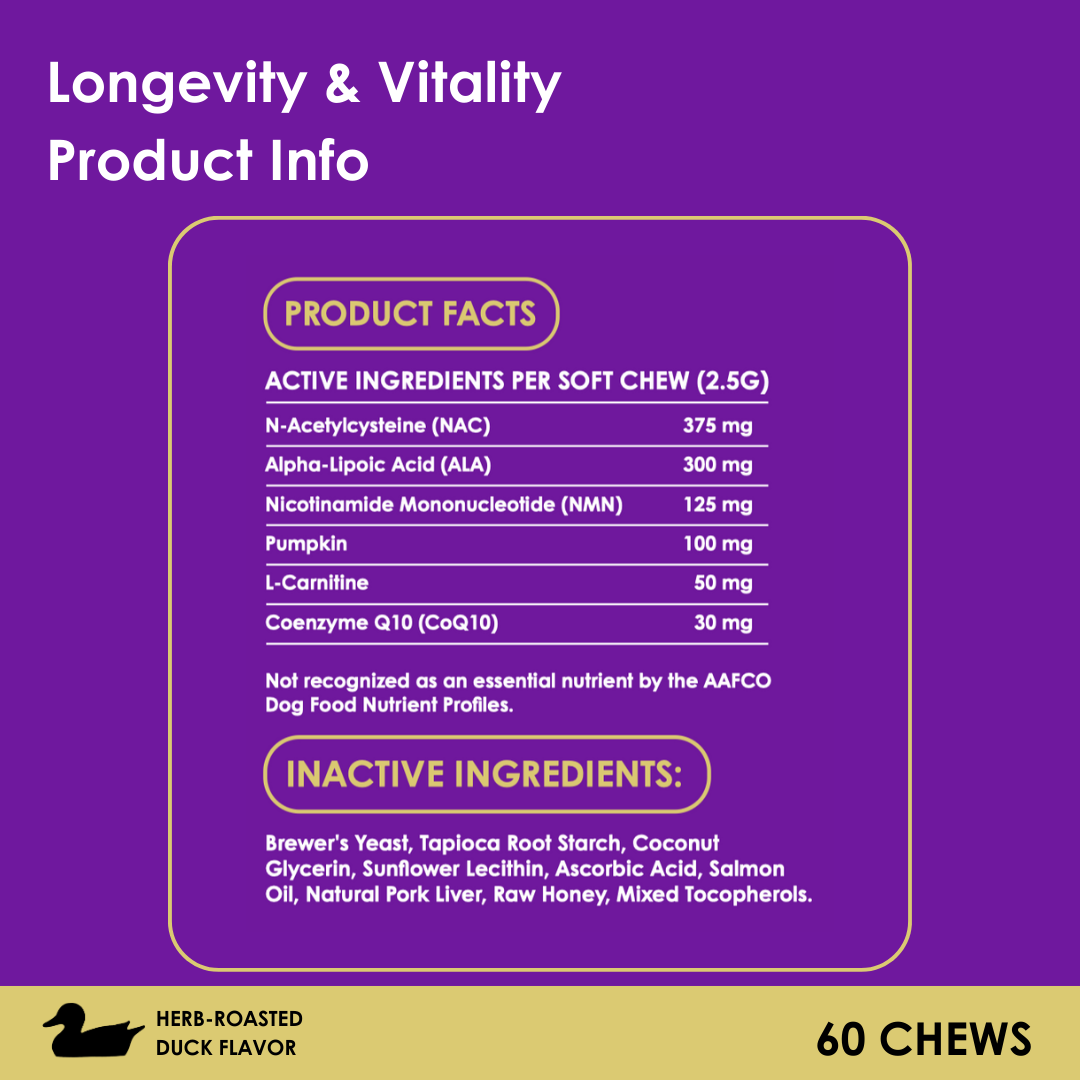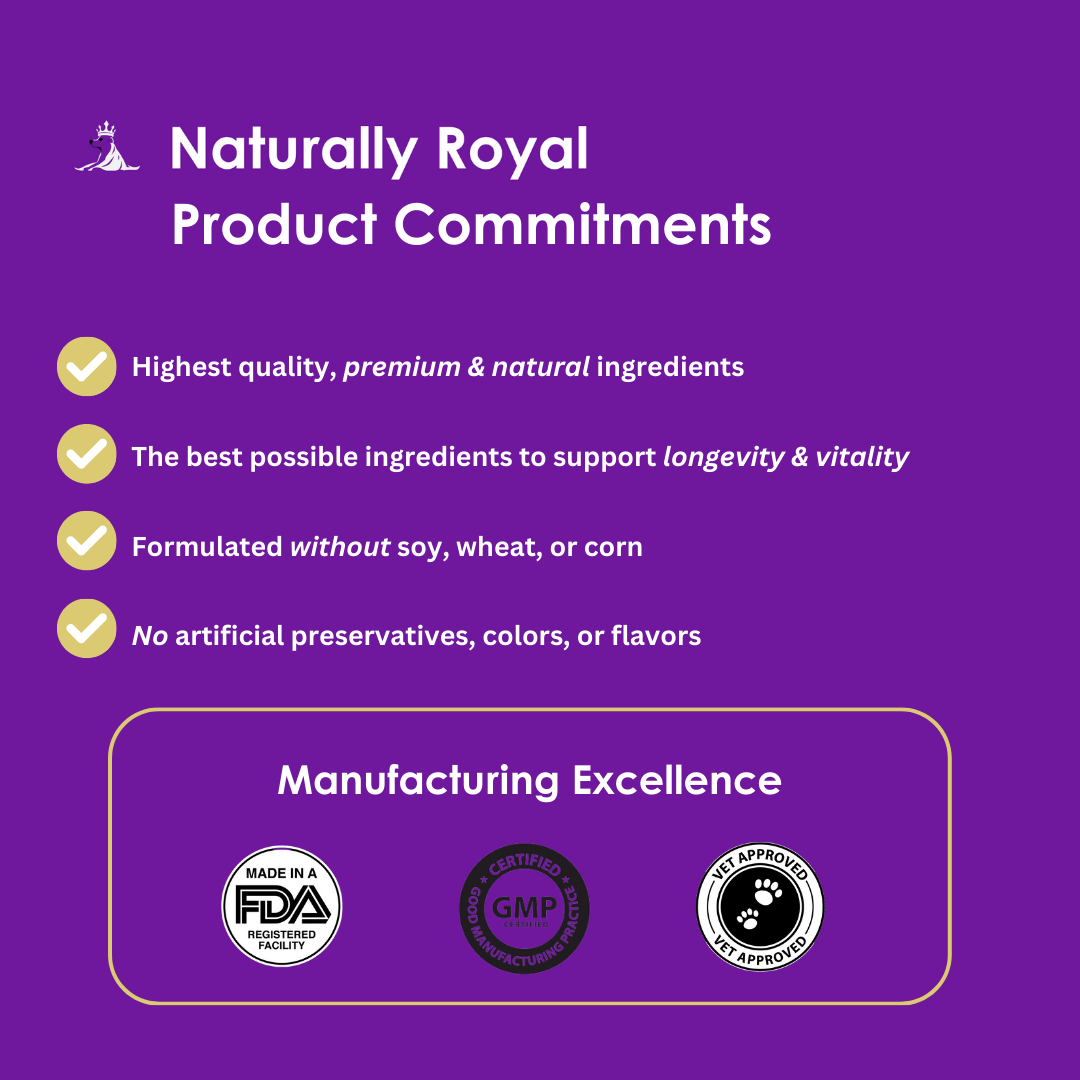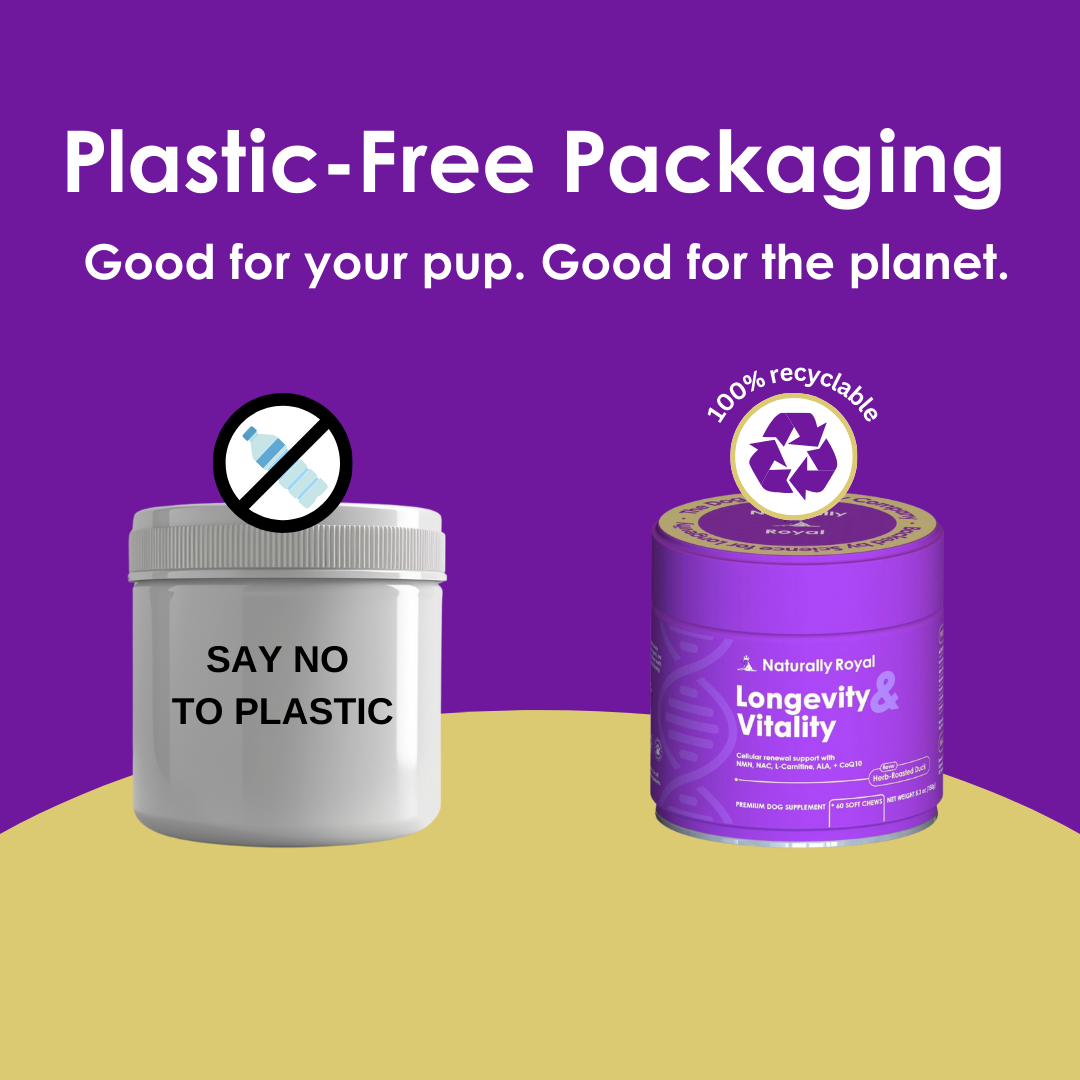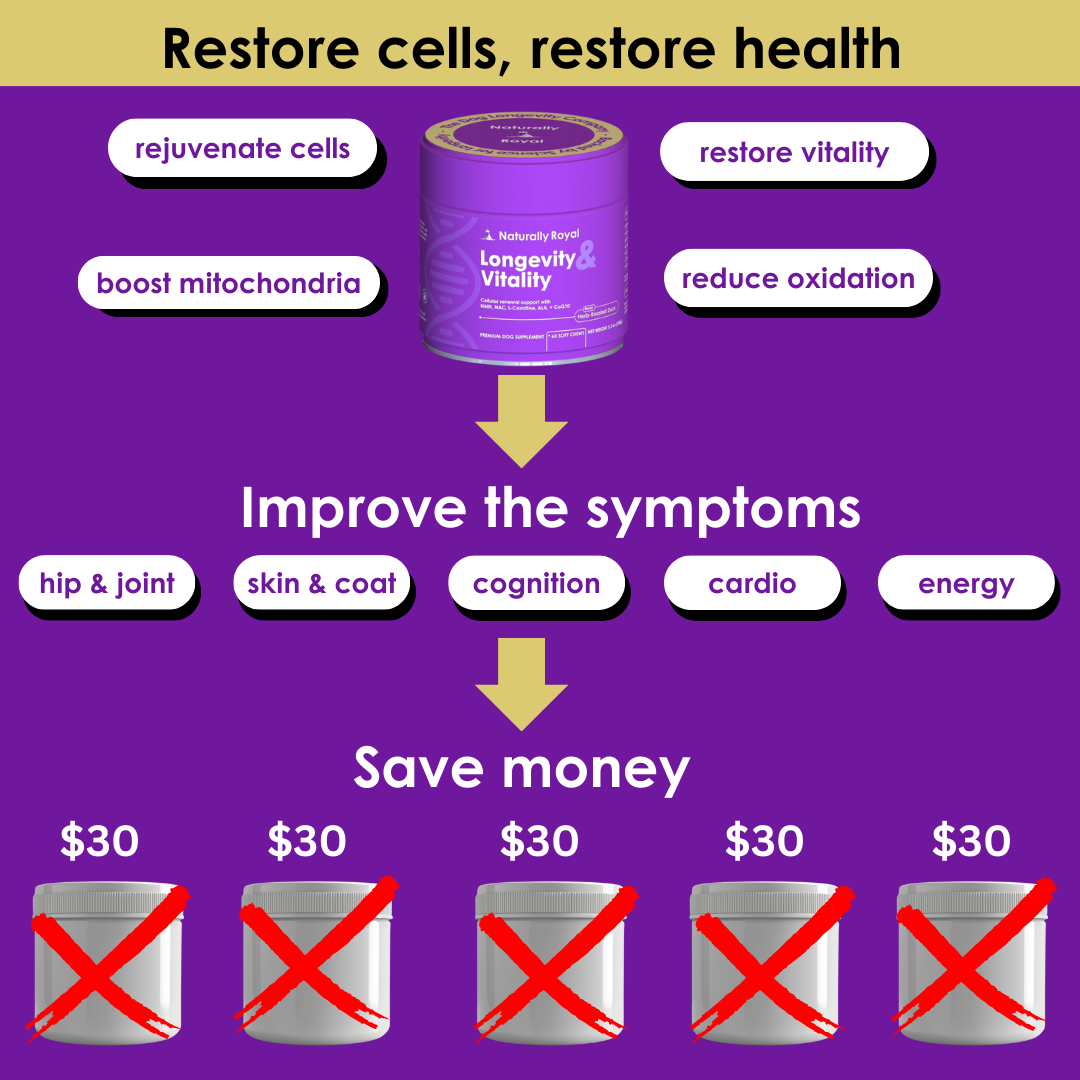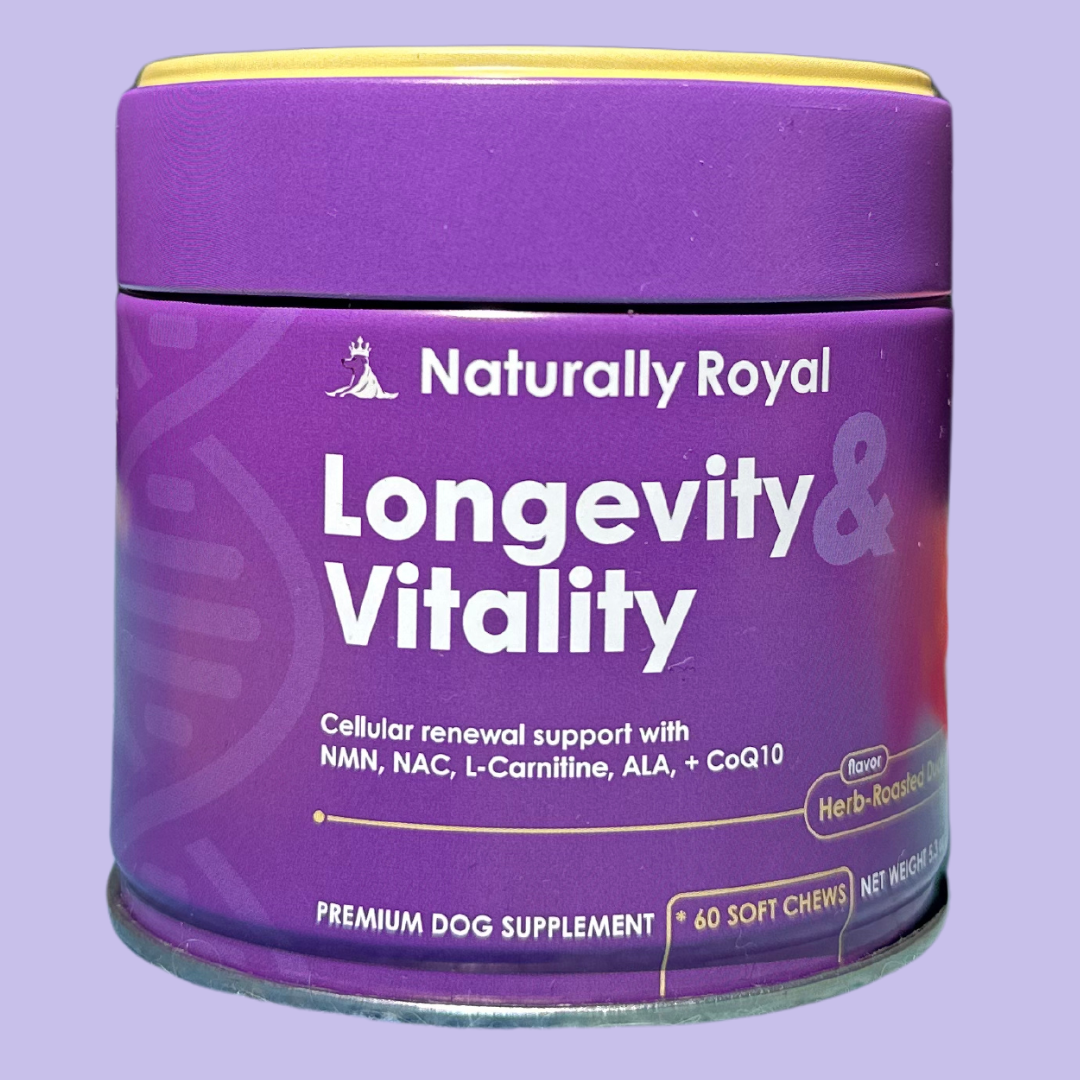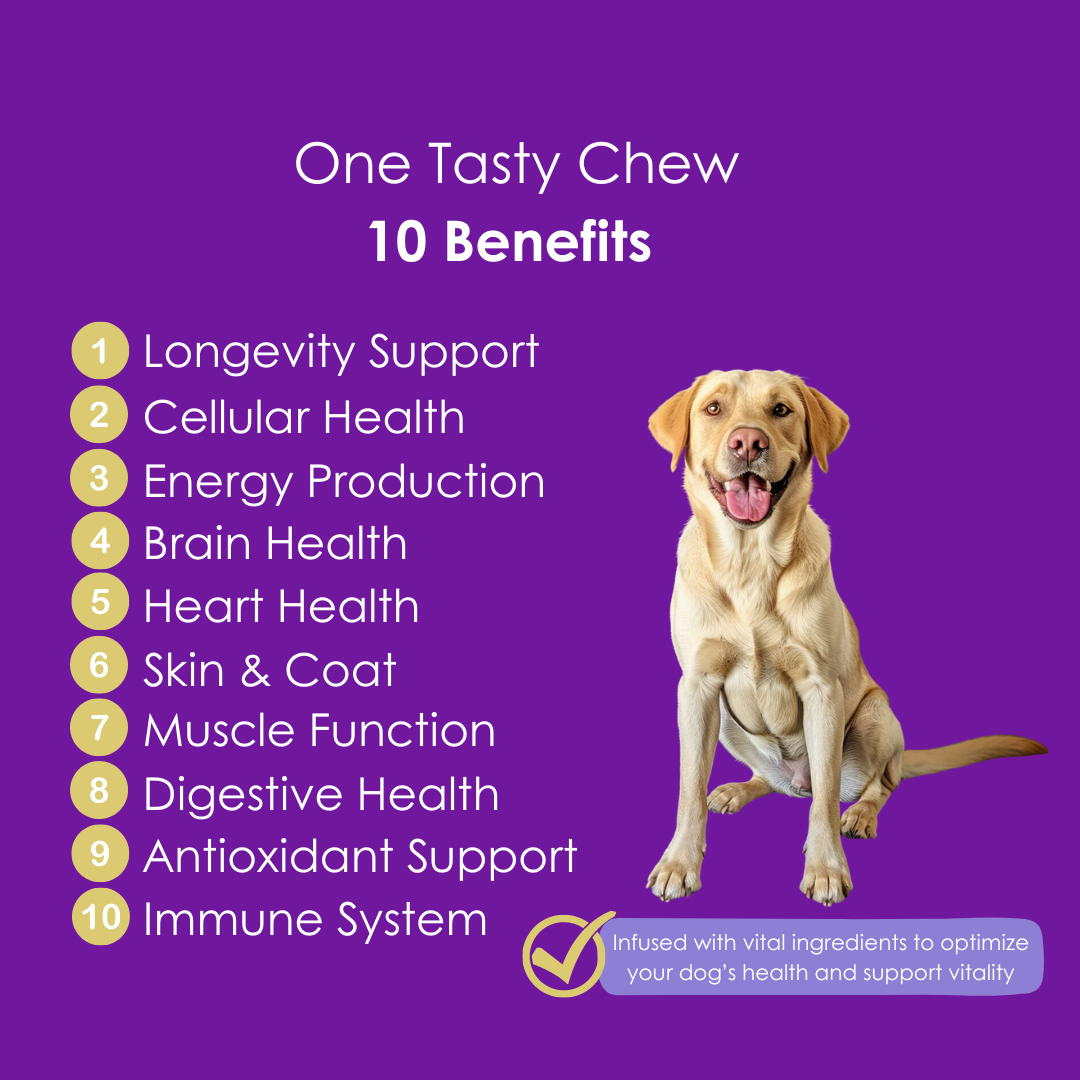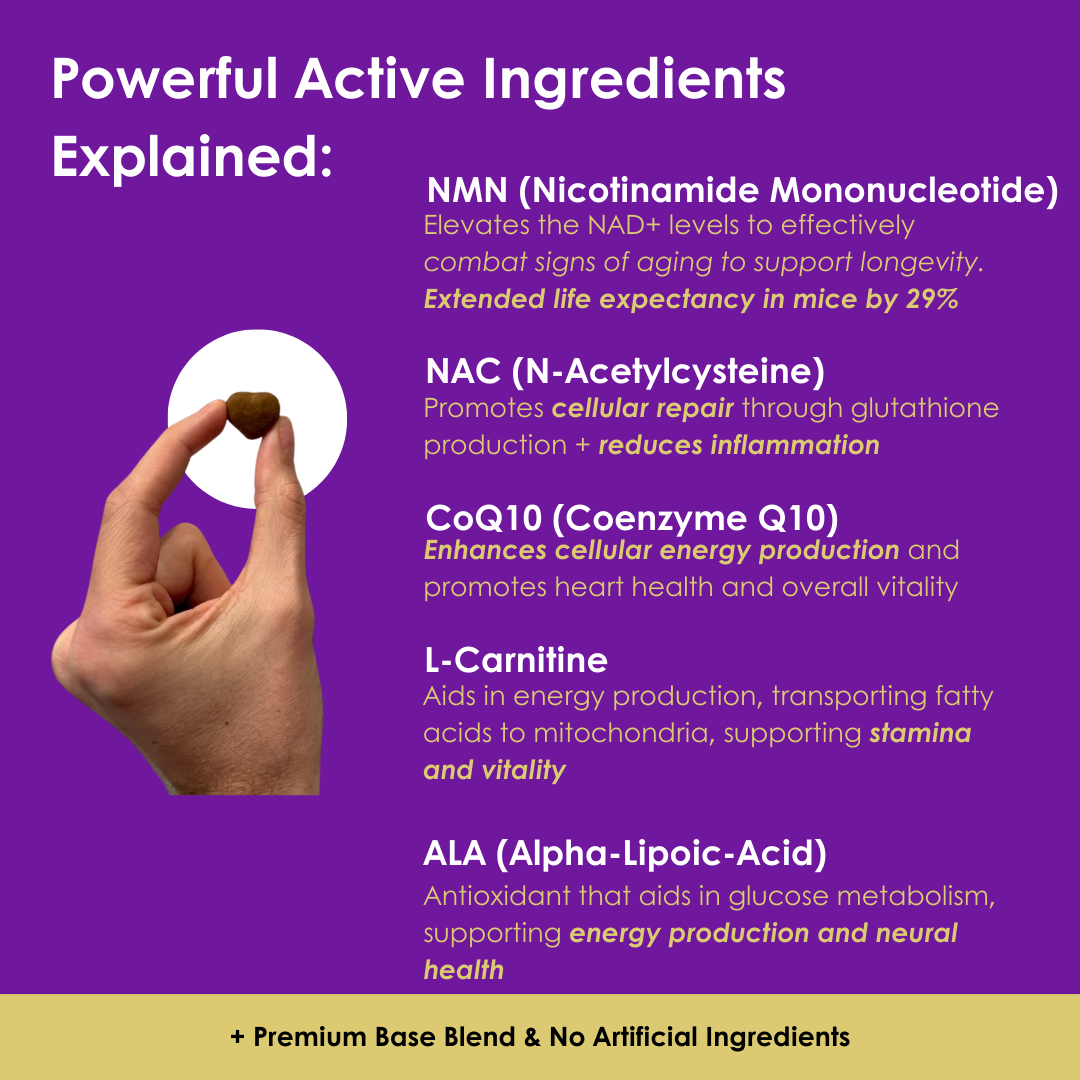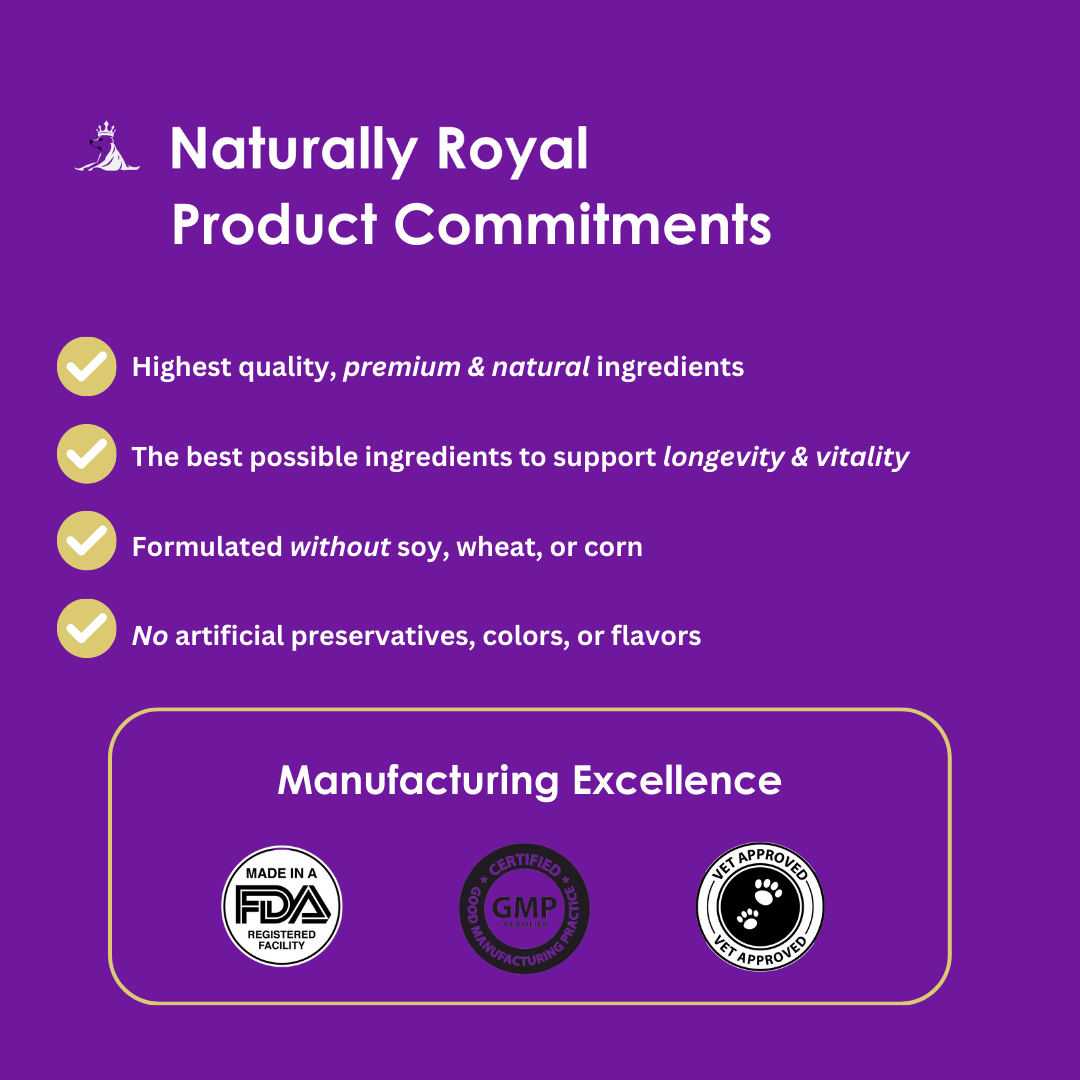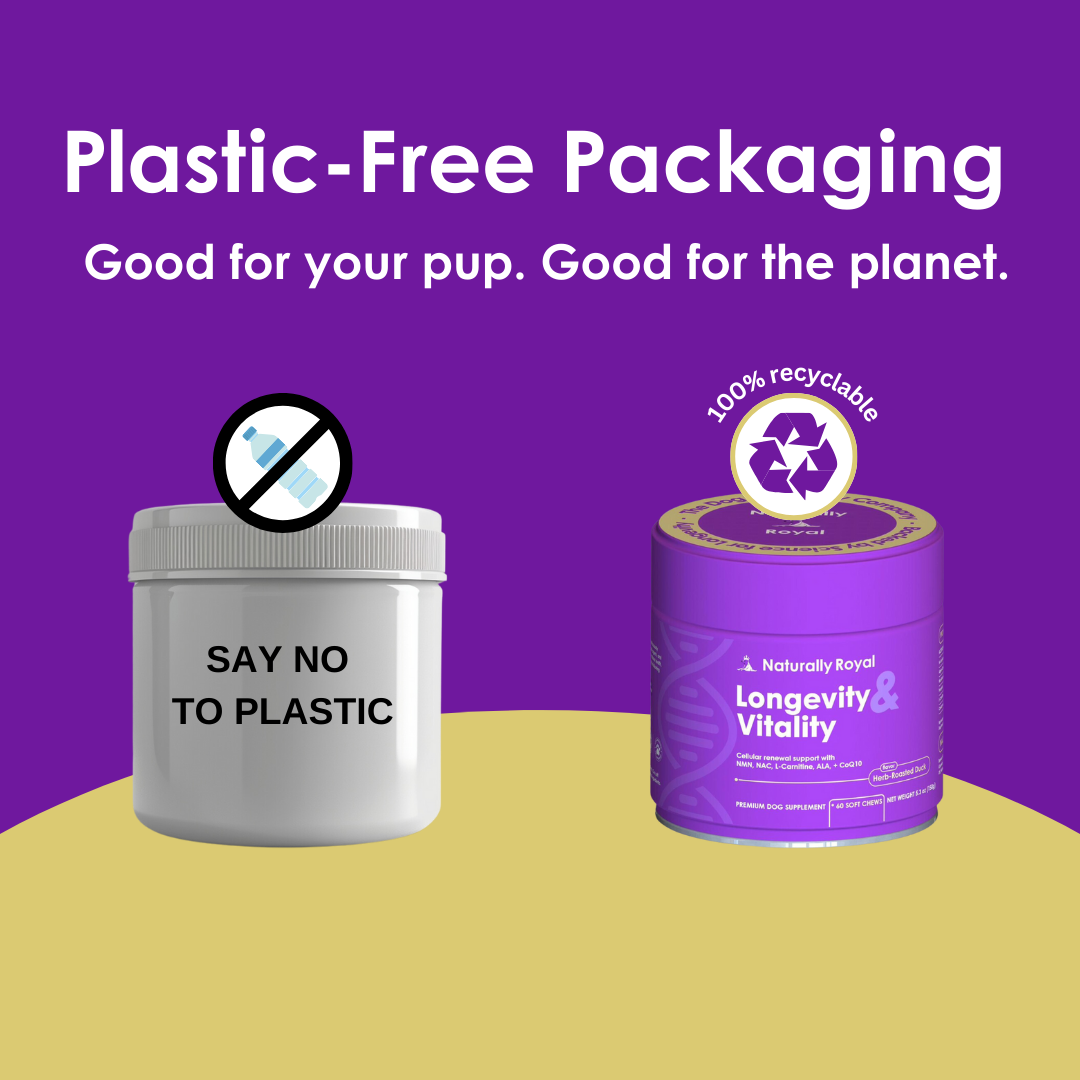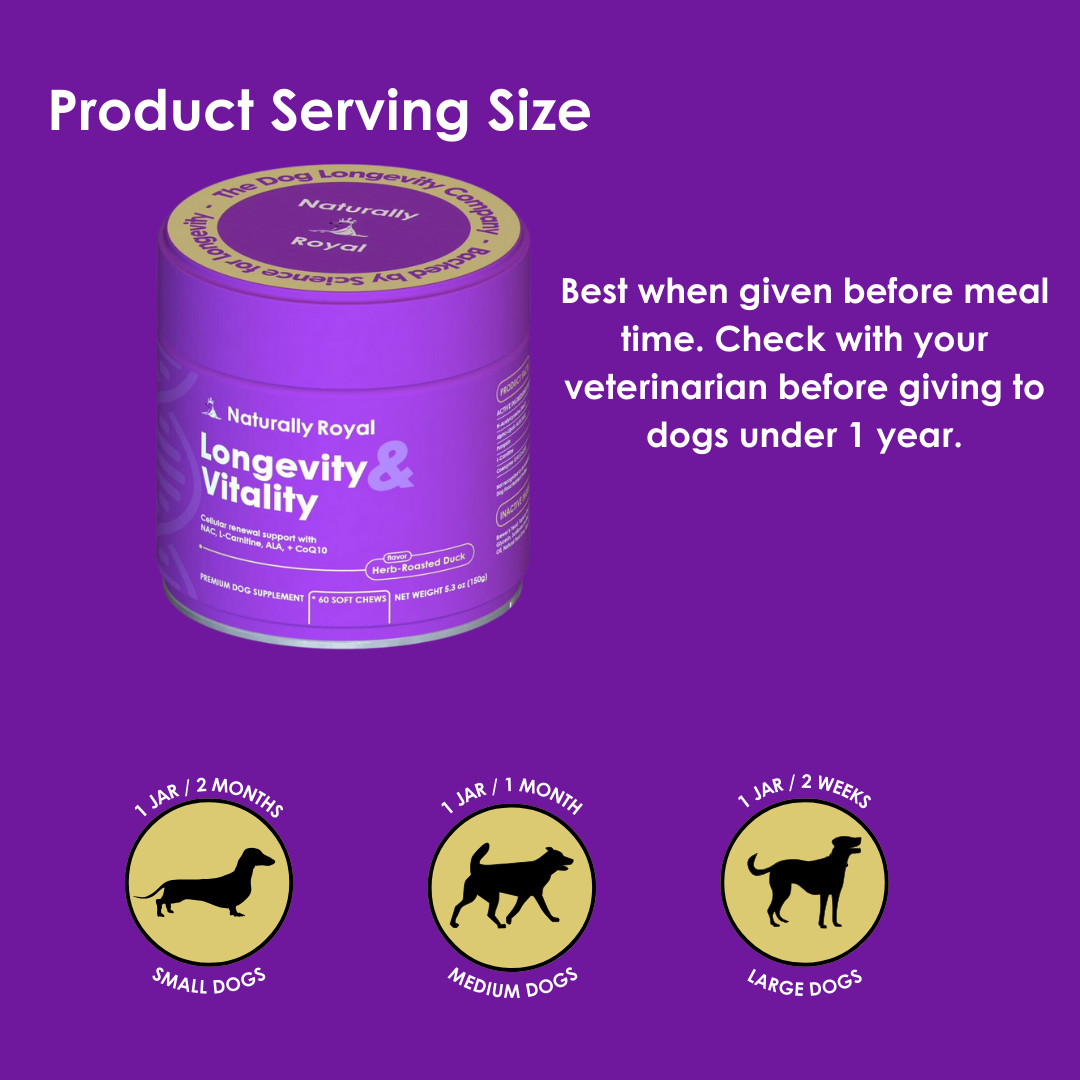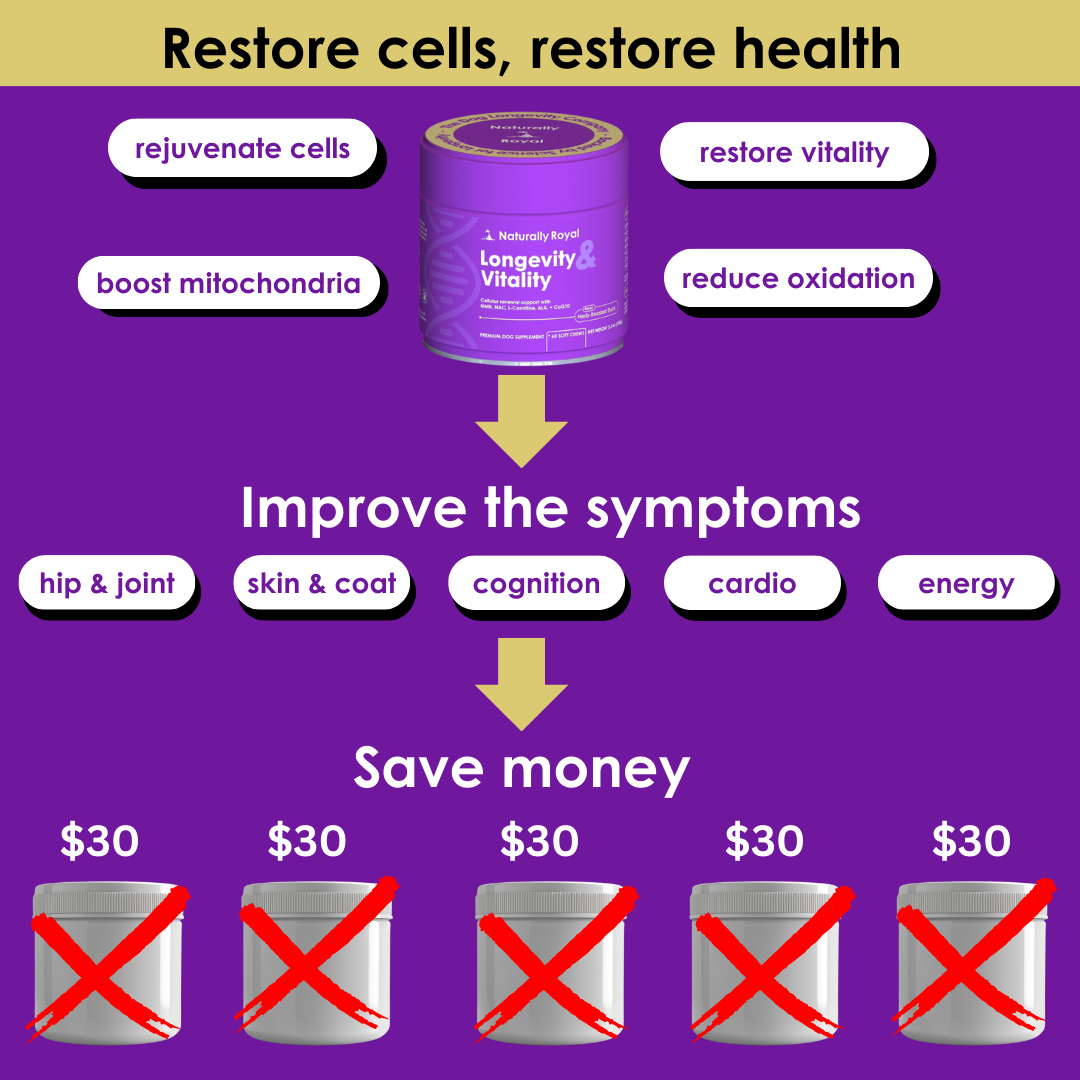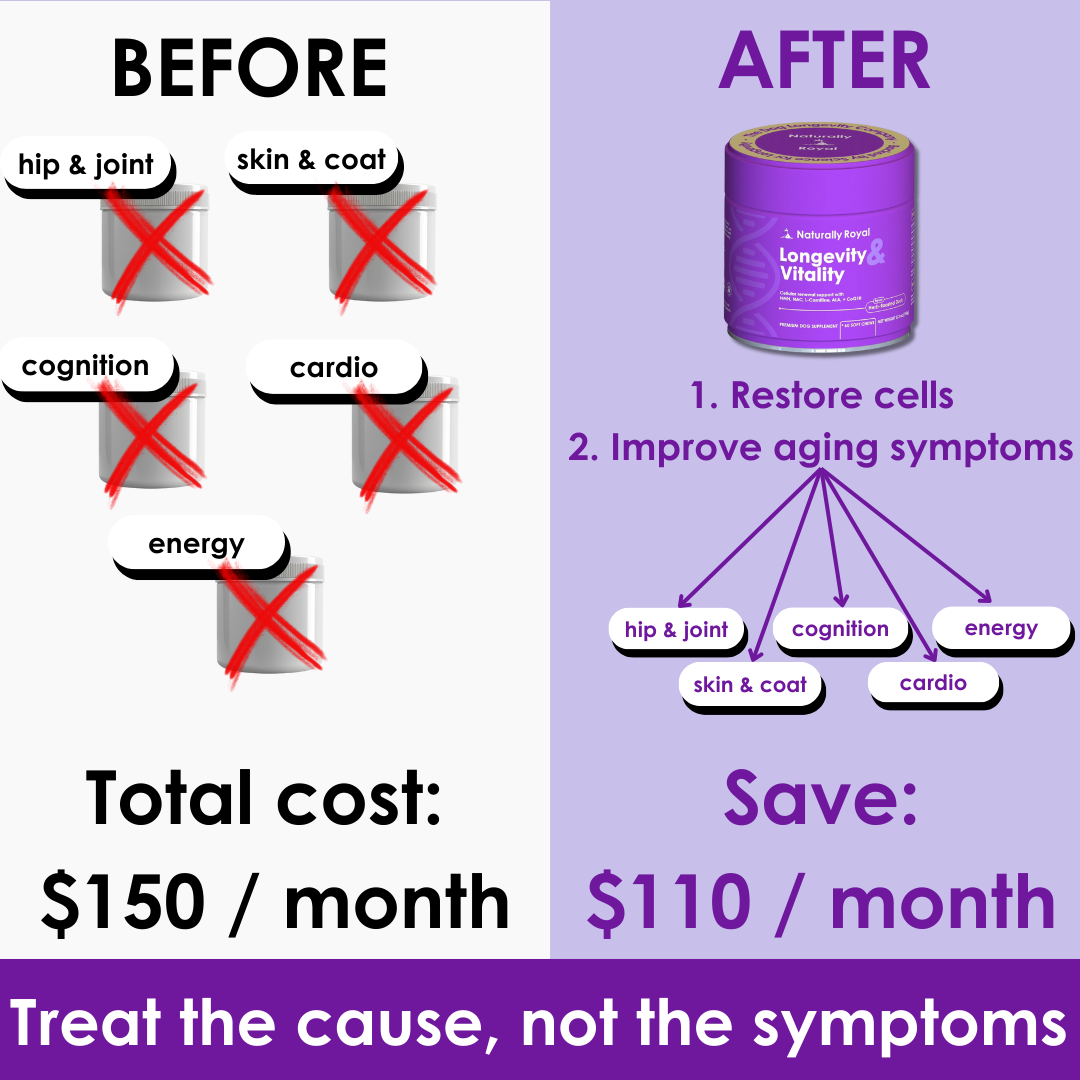Why Is My Dog Getting Lumpy?
As our dogs age, it's not uncommon for them to develop various lumps, bumps, and skin growths. These changes can be concerning, but understanding the types of growths and how to address them can help you ensure your dog's health and longevity. Let's jump into the reasons behind these skin changes and explore interventions, including cellular-level approaches.
Types of Skin Growths in Dogs
- Lipomas: Benign fatty tumors common in older dogs. They're soft, movable, and typically not painful.
- Sebaceous Cysts: Blocked sebaceous glands produce these harmless cysts filled with sebum.
- Warts: Caused by the papillomavirus, warts are more common in younger and older dogs due to their developing or weakened immune systems.
- Mast Cell Tumors: Potentially serious, these tumors can vary in appearance and may require immediate veterinary attention.
- Abscesses or Infections: Bumps can also result from infections or abscesses under the skin, often requiring antibiotics.
Supplemental Interventions
-
Boosting NAD+: Nicotinamide adenine dinucleotide (NAD+) plays a crucial role in cellular health and energy metabolism. As dogs age, NAD+ levels decline, which may contribute to the development of skin growths and other age-related issues. Supplements that boost NAD+ levels, such as nicotinamide riboside or nicotinamide mononucleotide, could potentially support skin health and overall wellness.
-
Antioxidants: Antioxidants combat oxidative stress, a factor in aging and cellular damage. Supplements like vitamins E and C, selenium, and omega-3 fatty acids can support skin health and may help prevent or slow the development of skin growths.
-
Probiotics: A healthy gut microbiome is linked to overall health, including skin condition. Probiotics can support immune function, potentially reducing the risk of skin issues related to viral infections, such as warts.
Practical Interventions
- Regular Vet Check-ups: Early detection and identification of skin growths are crucial. Your vet can differentiate between benign and more serious conditions.
- Diet and Nutrition: A balanced, nutrient-rich diet supports skin health. Consider diets high in antioxidants and omega-3 fatty acids.
- Topical Treatments: For certain types of growths, such as warts or mild infections, topical treatments may help. Always consult your vet before applying any product.
- Surgical Removal or Treatment: In some cases, particularly with potentially cancerous growths, surgical removal is the best course of action. Other growths may be treated with cryosurgery (freezing) or laser therapy.
Prevention Tips
- Sun Protection: Just like humans, dogs can experience skin damage from excessive sun exposure. Use pet-safe sunscreen on exposed skin, especially for dogs with thin coats or light-colored noses.
- Healthy Lifestyle: Regular exercise and weight management contribute to overall health and may help prevent conditions associated with skin growths.
- Avoid Toxins: Minimize your dog's exposure to environmental toxins, including certain pesticides and harmful household cleaners, which could contribute to skin issues.
Noticing lumps and bumps on your dog can be alarming, but understanding the potential causes and interventions can help you manage your dog's health effectively. Always consult with your veterinarian when you detect new growths or changes in your dog's skin.


